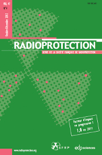
RADIOPROTECTION
metrics 2024
Bridging disciplines for enhanced safety and sustainability.
Introduction
RADIOPROTECTION, published by EDP SCIENCES S A, stands as a pivotal journal in the multidisciplinary fields of Nuclear Energy, Public Health, and Environmental Safety. With an ISSN of 0033-8451 and an E-ISSN of 1769-700X, this journal delves into the crucial aspects of radiation protection and its interactions with health and environment, providing a platform for researchers and professionals to disseminate their findings and insights. Despite being classified in the Q4 quartile for Health, Toxicology and Mutagenesis in 2023, its Q3 status in prestigious categories such as Nuclear Energy and Engineering, and Public Health, underscores its relevance in contemporary academic discourse. The journal continues to expand its cachet with converged years of publication from 1977 to 1981 and 1988 to 2024, ensuring a rich history of scholarly contributions. Access options for interested readers include traditional subscriptions, allowing for comprehensive engagement with a broad range of topics surrounding safety, sustainability, and risk management. Whether you are a researcher, professional, or student, RADIOPROTECTION serves as an essential resource for expanding understanding and fostering innovation within its field.
Metrics 2024
 0.29
0.29 1.40
1.40 1.10
1.10 21
21Metrics History
Rank 2024
Scopus
IF (Web Of Science)
JCI (Web Of Science)
Quartile History
Similar Journals
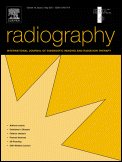
Radiography
Unveiling the Future of Imaging TechnologyRadiography is a premier academic journal published by ELSEVIER SCI LTD that focuses on the vital disciplines of radiology, nuclear medicine, and imaging technology. With an ISSN of 1078-8174 and an E-ISSN of 1532-2831, this journal has earned an impressive reputation, consistently ranking in the top quartiles across multiple categories in the 2023 Scopus rankings, including Q1 in Assessment and Diagnosis and Q1 in Research and Theory. Spanning decades of research from 1995 to 2024, Radiography provides a platform for cutting-edge studies, innovative techniques, and clinical advancements, making it essential reading for researchers, healthcare professionals, and students engaged in the fields of radiological sciences. Operating from the United Kingdom, and while not an Open Access journal, it offers a broad array of access options through institutional subscriptions, ensuring that critical research is available to stakeholders in the health professions. The journal's focus on both theoretical and practical aspects further underscores its role as a key resource in enhancing diagnostic practices and improving patient outcomes in the healthcare industry.
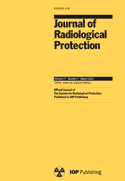
JOURNAL OF RADIOLOGICAL PROTECTION
Transforming knowledge into protective practices.Journal of Radiological Protection, published by IOP Publishing Ltd, is a pivotal academic journal dedicated to advancing knowledge in the fields of radiology and radiation protection. Since its inception in 1988 and continuing through to 2024, this journal provides a platform for the dissemination of innovative research and critical reviews that explore the effects of radiation exposure on health and the environment. With an Impact Factor that places it among the Q3 category in Medicine, Public Health, Environmental and Occupational Health, as well as in Waste Management and Disposal, the journal is vital for professionals, researchers, and students keen on understanding the implications of radiological science. The Journal of Radiological Protection aims to contribute to improved practices and policies in radiation safety, making its findings essential for those involved in environmental health and public safety initiatives. Articles are accessible through various academic databases, ensuring widespread dissemination among the scientific community, thereby enhancing the journal's stature and influence in radiological research.

Nuclear Physics and Atomic Energy
Illuminating the path of atomic advancement.Nuclear Physics and Atomic Energy is a reputable open-access journal that focuses on the fields of nuclear physics and high-energy physics, providing a forum for researchers, professionals, and students to share their findings and advancements. Published by the Institute of Nuclear Research, National Academy of Sciences of Ukraine, this journal has been committed to disseminating knowledge since its inception in 2006, ensuring that scientific advancements remain accessible to a global audience. With an ISSN of 1818-331X and an E-ISSN of 2074-0565, the journal features a diverse array of articles that span the continued exploration and application of nuclear phenomena. Although currently categorized in the Q4 quartile for Nuclear and High Energy Physics in 2023, the journal is steadily working towards increasing its impact and engagement within the academic community. With a Scopus rank of #74 out of 87 in its category, it serves as a valuable resource for advancing crucial research in a vital scientific area. Researchers are encouraged to contribute their innovative studies to foster collaboration and knowledge sharing in this dynamic field.
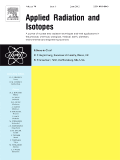
Applied Radiation and Isotopes
Exploring the Frontiers of Isotopic TechnologyApplied Radiation and Isotopes is a premier journal dedicated to the dissemination of high-quality research in the fields of radiation and isotopes, published by PERGAMON-ELSEVIER SCIENCE LTD. With a commendable impact factor reflecting its respected standing, this journal ranks in the Q3 category within Radiation according to the 2023 evaluation, emphasizing its relevance in the scientific community. Operating out of the United Kingdom, it has been a crucial platform for innovation and knowledge sharing since its inception, covering a wide array of applications ranging from the medical to the industrial sectors. Researchers can access a wealth of articles through its online platform, although it currently does not offer open access options. Applied Radiation and Isotopes is thus an essential resource for researchers, professionals, and students aiming to stay abreast of the latest developments in radiation physics and isotopic applications, making impactful contributions to the field.
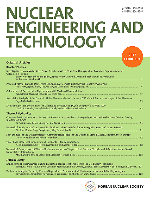
Nuclear Engineering and Technology
Pioneering Innovations in Nuclear EngineeringNuclear Engineering and Technology, published by the Korean Nuclear Society, is a premier Open Access journal dedicated to the rapidly evolving fields of nuclear energy and engineering. Established as a significant platform for scholarly communication since 2008, this journal has consistently anchored itself in the academic community, achieving a Q2 ranking in its category as of 2023, reflecting its influence and quality within the domain of Nuclear Energy and Engineering. With an impressive Scopus ranking of #15 out of 77, positioning it in the 81st percentile, the journal publishes cutting-edge research that addresses both fundamental and applied aspects of nuclear technology. Nuclear Engineering and Technology embraces an open access model since 2013, ensuring that valuable research is accessible to a global audience, thereby enhancing collaboration among researchers, professionals, and students passionate about advancing nuclear technology. The journal serves as an essential resource for those aiming to innovate and push the boundaries of knowledge in nuclear sciences.
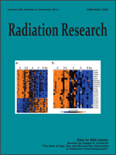
RADIATION RESEARCH
Exploring the complexities of radiation exposure and its effects.RADIATION RESEARCH is a prestigious journal published by the RADIATION RESEARCH SOC that serves as a vital resource for professionals and researchers in the fields of biophysics, radiation science, and radiology. Established in 1954, this journal has consistently advanced the study of radiation's effects on health and the environment, bridging fundamental and applied research. It boasts an impressive impact factor reflected in its quartile rankings, including Q2 in Biophysics and Q1 in Radiation, making it a highly regarded publication within its discipline. Researchers will find valuable insights through rigorous peer-reviewed articles that explore innovative methodologies and findings related to radiation exposure, imaging technologies, and the biological consequences of radiation. Although the journal does not currently offer open access, it remains a vital reference for academia and industry, fostering a deeper understanding of radiation sciences and their implications for future research and public health.
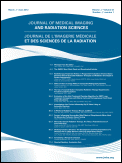
Journal of Medical Imaging and Radiation Sciences
Pioneering research in imaging and radiation technology.Journal of Medical Imaging and Radiation Sciences, published by Elsevier Science Inc, is a prominent platform dedicated to advancing research and knowledge in the field of medical imaging and radiation sciences. With an ISSN of 1939-8654, this journal plays a crucial role in disseminating innovative studies and insights from 2008 to 2024, providing a valuable resource for researchers, professionals, and students alike. It is positioned within the Q3 quartile in both the categories of Radiological and Ultrasound Technology and Radiology, Nuclear Medicine and Imaging, indicating its growing influence and contributions to these critical areas of healthcare. While it currently does not offer open access, authors benefit from the journal's rigorous peer-review process, ensuring high-quality publications. As the landscape of medical imaging continues to evolve, the Journal of Medical Imaging and Radiation Sciences stands out for its commitment to education and innovation, inviting contributions that explore the latest technological advancements and clinical applications.

Radiation Oncology
Connecting global experts to enhance radiotherapy practices.Radiation Oncology is a premier scholarly journal published by BMC, dedicated to advancing the field of oncology through innovative research and comprehensive reviews since its inception in 2005. With its Open Access model, the journal ensures that the latest findings in radiotherapy and cancer treatment are accessible to a global audience, fostering collaboration and knowledge sharing among researchers, clinicians, and healthcare professionals. The journal has garnered an impressive reputation with prestigious rankings, achieving Q1 status in Radiology, Nuclear Medicine and Imaging and Q2 in Oncology as of 2023, reflecting its significant impact on the scientific community. In the Scopus rankings, it stands proud at Rank #61 in Radiology, Nuclear Medicine and Imaging, placing it in the top 81st percentile, and Rank #112 in Oncology at the 72nd percentile. With a converged publication plan extending through 2024, Radiation Oncology remains a vital resource for those dedicated to enhancing cancer treatment methodologies and outcomes.
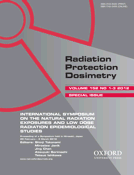
RADIATION PROTECTION DOSIMETRY
Fostering innovation in safeguarding against radiation hazards.RADIATION PROTECTION DOSIMETRY is a vital academic journal dedicated to the field of radiation protection, published by Oxford University Press. With an ISSN of 0144-8420 and an E-ISSN of 1742-3406, this journal serves as a platform for groundbreaking research and developments in dosimetry, health physics, and radiation safety spanning over four decades since its inception in 1981. Recognized with a Q3 ranking in multiple categories including Medicine (miscellaneous) and Public Health, this journal plays a key role in disseminating important findings that inform policy, enhance practice, and promote the protection of both individuals and the environment from radiation hazards. While currently not available as Open Access, the journal's curated content is essential for researchers, professionals, and students dedicated to advancing knowledge in radiation protection and related areas. Interested readers will find the latest research trends, case studies, and reviews invaluable for their work and studies within this multidisciplinary domain.
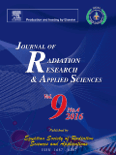
Journal of Radiation Research and Applied Sciences
Innovative insights into the effects and applications of radiation.Journal of Radiation Research and Applied Sciences, published by ELSEVIER, is a premier open-access journal since 2013, dedicated to advancing the understanding and application of radiation research in various fields. With an ISSN of 1687-8507, this journal serves as a vital resource for researchers, professionals, and students engaged in the study of the physical and biological effects of radiation, radiation physics, and its applications in medicine and industry. Its rigorous peer-review process ensures the dissemination of high-quality research that meets the growing demands for innovative solutions in radiation science. By offering comprehensive access options, the journal promotes an inclusive approach to sharing knowledge with the global community. The Journal of Radiation Research and Applied Sciences stands out as a key platform for scholarly communication, fostering advancements that impact both theory and practice in the rapidly evolving landscape of radiation research.